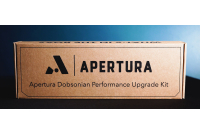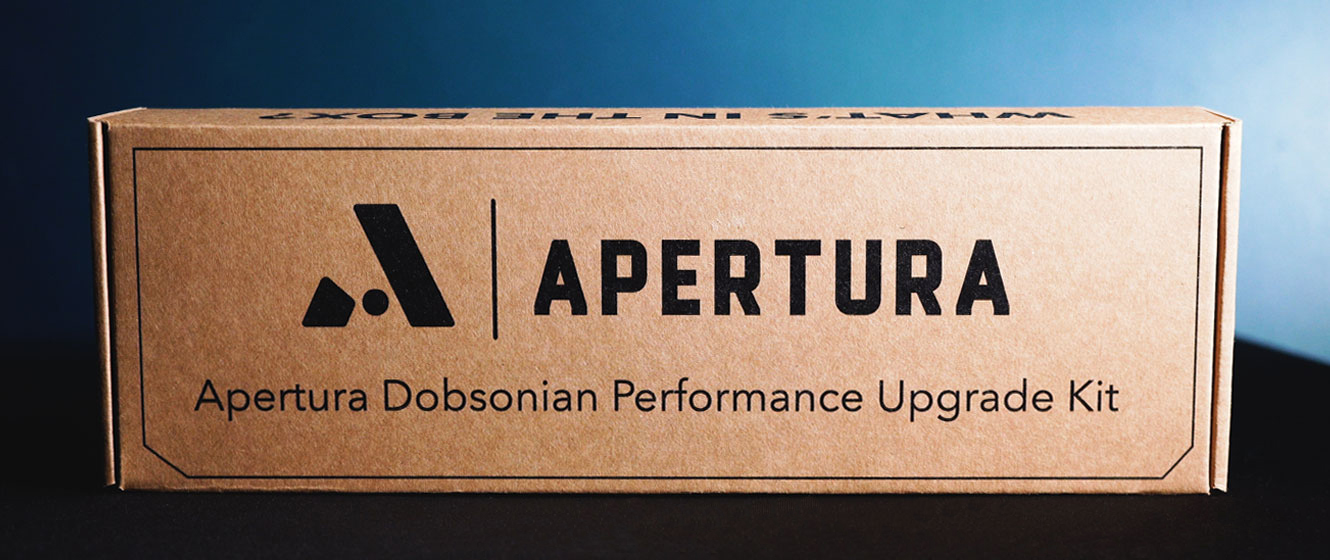
There is no doubt that the factory configuration of Dobsonian telescopes offer fantastic performance. The many positive user reviews and recommendations back this statement. And while this is true, we took things a step further by looking to increase the performance of this telescope. The multifaceted Apertura Dobsonian Performance Upgrade kit does just that!
How do we improve this already great performance?
REDUCTION OF STRAY LIGHT
The open end of a telescope not only lets in the light that we want to view through the eyepiece, but it also lets in unwanted stray light. This rogue light can come from many sources; such as security lights, street lights, the moon, and even bright stars that can sit just outside the field of view. This stray light then reflects off the inner surfaces of the telescope and eventually winds up being viewed through the eyepiece. This causes the dark background of the sky to brighten slightly, muddying the view and decreasing contrast.
There are a couple different methods available to decrease the negative effects of stray light. The most effective option is the installation of precision cut knife edge baffles in the telescope’s tube. These baffles are painstakingly designed and positioned for maximum performance. These baffles provide the largest decrease in stray light, but can have a negative side effect outside of being costly to produce and difficult to implement. The baffles can push air currents that normally ride along the inner topside of the tube, into the light path. These currents in the light path act much as a turbulent atmosphere does; stirring the view and causing unsteady conditions. Not all systems are like this, but it is a common negative side effect of a fully baffled open tube telescope like a Newtonian.
The most readily available option is a velvet-like material known as Flocking Paper. This material has many small strands that stick up, much like a carpet. When the stray light hits this surface, the light is dampened and absorbed, creating a positive impact on your view. This method allows internal tube currents to ride smoothly along the interior surface of the telescope. These currents remain mostly out of the light path just as they did in the scope’s factory configuration, unlike many baffled systems.
While every surface on the inside of the telescope, with the exception of the mirrors, can be flocked - it would be quite an involved and costly process. This kit provides contrast improving flocking for the most critical areas of the telescope that have the largest positive impact and are easiest to install. In an unbaffled tube there is still the possibility of stray light entering the focuser in some situations, but with the placement of the flocking material in these key areas, that chance occurrence is greatly reduced.
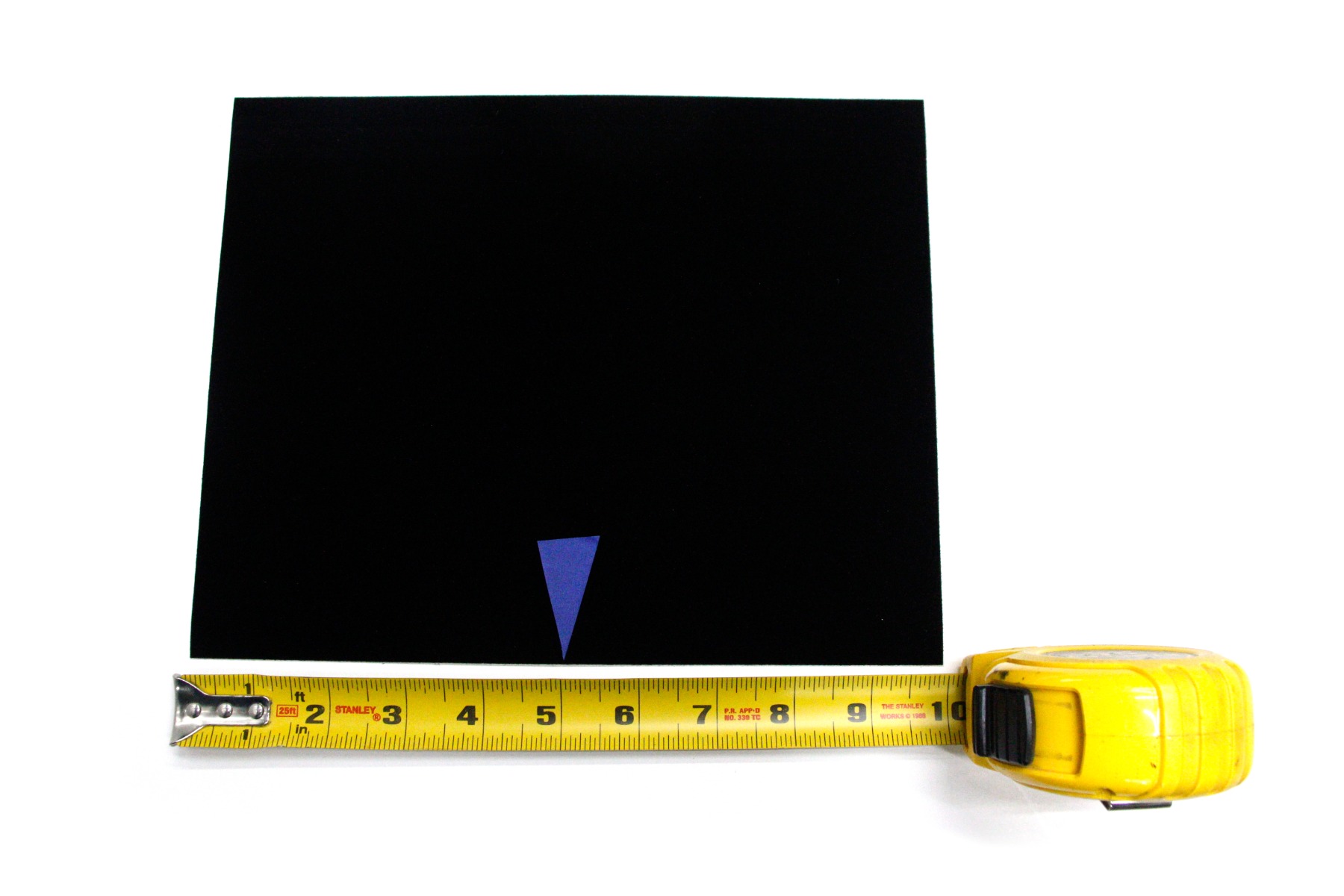
SECONDARY MIRROR COLLIMATION KNOBS
What are these knobs and why are they useful? This is a great question! As you might know, Newtonian telescopes require careful alignment of their two mirrors for optimal performance. When adjusting the secondary mirror so that it lines up with the focuser and the primary mirror at the bottom of the tube, the three screws of the secondary support need to be manipulated. These screws change the angle that the secondary mirror points. To do this in most telescopes requires the use of a screw driver or hex key to turn the adjustment hardware. This can be a hassle at night, requiring the user to step away from the eyepiece or collimation tool being used, and devote all of their attention to turning these screws. By replacing the screws with Apertura Collimation Knobs, the secondary mirror adjustments can be made by simply turning the knob with one's hand. This makes adjustments fast, safe, and simple; without the risk of dropping a tool down the telescope. After becoming accustomed to the telescope and Apertura Collimation Knobs, users may even find that they are able to make adjustments to the secondary mirror without ever taking eyes off the collimation tool or focuser.

PRIMARY MIRROR CELL UPGRADES
The primary mirror cell is the device that supports and positions the primary mirror. It uses springs to support the weight of the mirror and allows for some adjustability in its positioning. The 8”, 10”, and 12” Performance Upgrade Kits, with the exception of the 6” kit, are supplied with upgraded collimation springs that take more energy to compress them than the factory springs do, which can help to keep the mirror positioned correctly. This is true both when making adjustments and after they have been completed. The image shows a factory spring on the left, and the stiffer upgrade spring to the right.
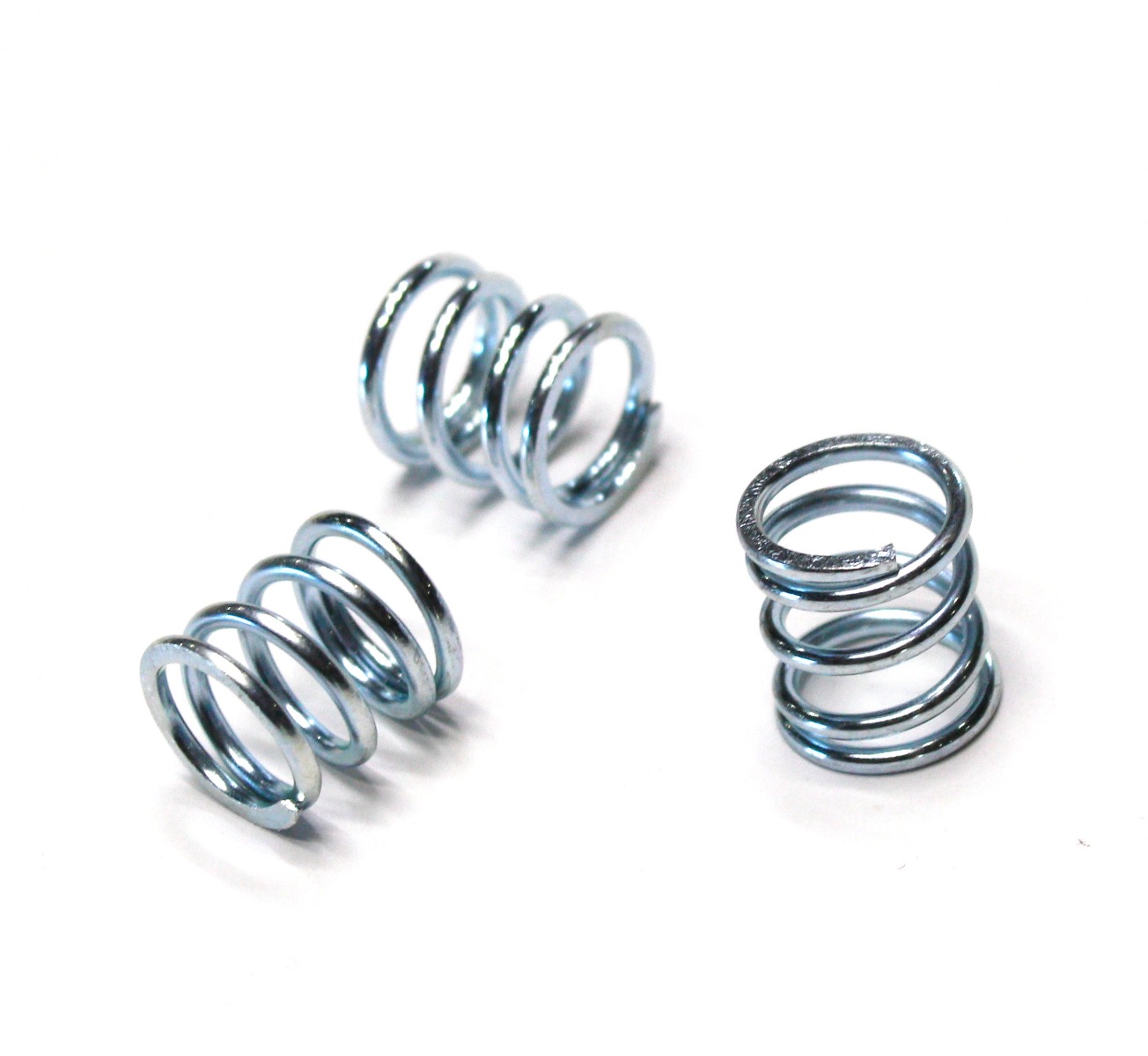
The spring performance of the 6” telescope is upgraded by installing metal washers on either side of the factory springs. Additionally the Apertura 6" Dobsonian Performance Upgrade Kit is supplied with replacement collimation knobs and thumb screws for the primary mirror of the telescope. These high quality and larger diameter knobs allow for fine adjustments to be more easily made on the primary mirror of the telescope.
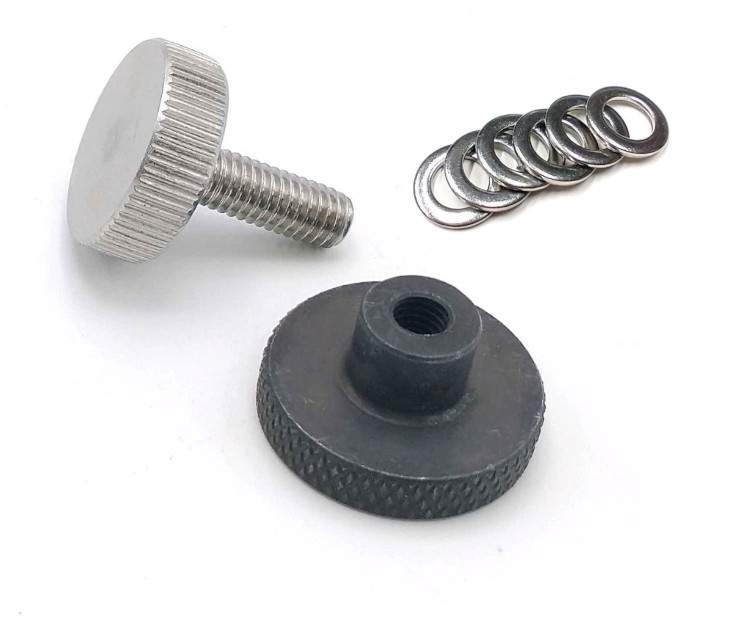
This Article was Last Updated on 07/17/2023





